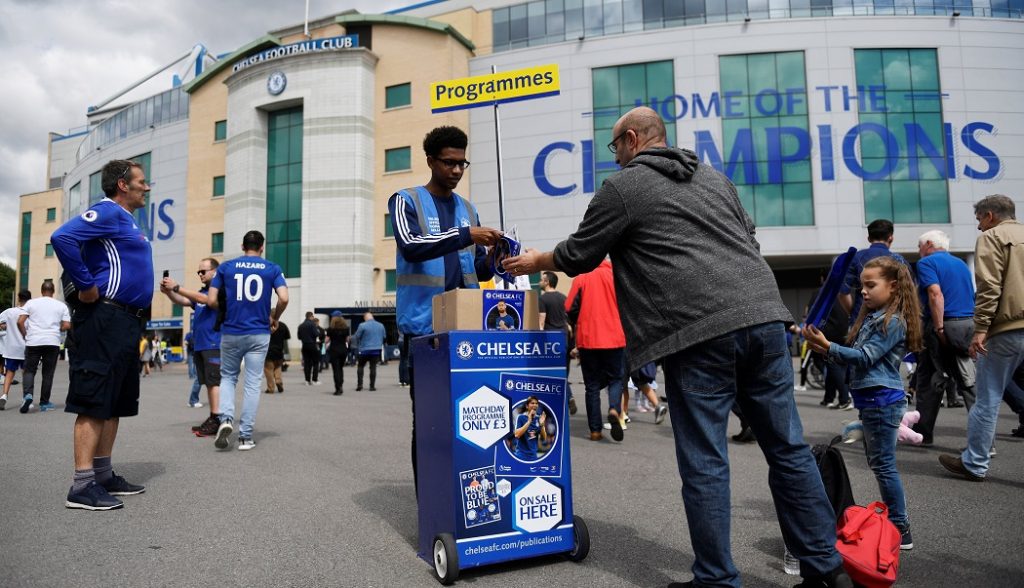A customer-led approach to selling sponsorship
August 29, 2017
Do you have a product-led or customer-led approach to selling sponsorship? Sophie Morris looks at the difference between the two and explains why the distinction is important.
A product-led approach in sponsorship tends to be focused on the sales processes. A common question is “what shall we put in the deck?”. You know the current sponsorship assets you have to offer: the branding, the emails and social media posts, use of ambassadors, content production etc and you build those in along with the story of who you are and how many fans and followers you have.
A customer-led approach focuses first on what your customers, the potential sponsors, want and looks to generate sponsorship assets to enable them to meet those needs. It also presents your organisation and your audience with the detail needed for a sponsor to make an informed decision about whether you’re a good match or not. These are all elements of the sponsorship ‘product’.
Imagine you’re selling a consumer product, you don’t start that process by planning how to sell it. You start by understanding what will best meet customer needs and then designing the product with them in mind. The sales brochure is written at the end of the process.
Focusing on customer needs at the start of building the sponsorship strategy process increases the likelihood of long-term partnerships being established.
Sponsorship is not just the assets that you deliver but the overall experience for the sponsors, starting with sales, through relationship management, to measurement and planning.
Relationship marketing is more prevalent in business-to-consumer (B2C) markets but it increases effectiveness in business-to-business (B2B) markets too e.g. rights holder to sponsor brand.
However, B2B International found that “only 14% of large B2B companies are truly customer centric, where the customer experience is ingrained in the company culture”.
READ MORE: Are Manchester United and Tinder a match made in heaven?

Accenture research found that 86% of B2B executives interviewed said that customer experience in both sales and service interactions are important to strategic priorities and 74% said that it will play an even larger role in the future. 78% said that a differentiated experience links directly to business results and 77% said that it provides competitive advantage.
A customer-led approach to sponsorship is part of a marketing-based approach, which means understanding not only the current needs but also anticipating future needs.
Any sponsor’s strategy for growth takes them from ‘where they are now’ to ‘where they want to be’ and they are looking for you to be part of the ‘how they get there’. You are a marketing platform for your sponsors.

The world of marketing is also changing rapidly and marketers have a myriad of options available to them.
Anticipating needs and innovating to meet them, differentiating your offering to each potential sponsor, will keep your relevance when brands are deciding or re-assessing their marketing plan.
Adopting a marketing approach looks at your wider business objectives.
It analyses the environment you operate in: externally – the market, your customers and competitors – and internally – your available resource and capabilities. It segments and targets the potential customer base, creating a specific positioning for each segment.
The marketing plan then determines how to reach and satisfy that audience, working to the 7Ps framework of: product, price, place, promotion, people, physical and processes. Because of the importance of measuring impact, we also add ‘performance’ to the planning stage to make 8Ps in total!
So the ‘product’ element is not the start of the process and it encompasses much more than just the package of sponsorship rights that you are offering. It is also the alignment with your brand, the access to your audience and the whole experience; the assets are just the tools that facilitate that.
Constant monitoring of the environment and adjusting your positioning within it, will allow you to continually improve the sponsorship offering and experience and therefore maintain your relevance to brands.

It’s important to understand the mindset of the sponsor and how they compare you to all other elements of the promotional mix that they have at their disposal.
Sponsorship analysis tools can effectively show you if you are positioning yourself as a relevant marketing platform for brands or if you still have a product-led approach. Understanding a brand’s objectives, what assets they need to deliver those objectives and their expectations of your property as a way to reach your audience are all crucial on the road to success.
Do you want to contribute to iSportconnect? Click here to join the discussion on our Community page!


